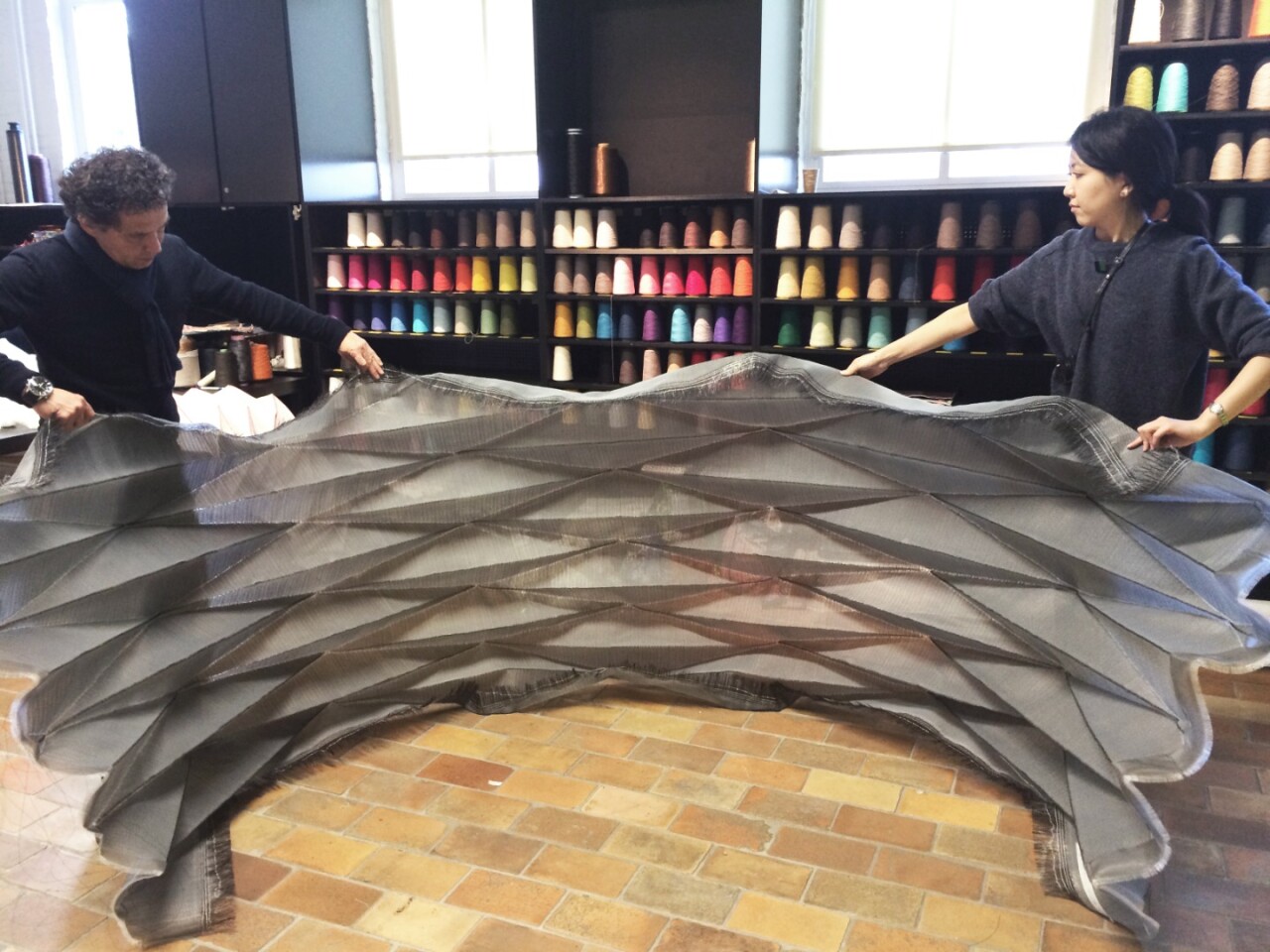

| Date | 25th, Sep 2018 |
|---|
A collaborative research team called MoonMars is developing a simple, versatile way of building off-world habitats using origami. Made of high-performance textiles, the origami bases could be self-assembling and able to reconfigure themselves to meet future needs.
Building the first bases on the Moon and Mars will be far from easy. Unlike construction projects on Earth, putting up even prefab habitats on other planets makes deep-sea engineering look like a doddle. It's one thing to assemble something in a shirt-sleeve environment, but in low gravity, a vacuum, and wearing a spacesuit at the end of a logistical pipeline stretching hundreds of millions of miles, it is unimaginably slow, expensive, and difficult.
To make things a bit easier, MoonMars – a collaborative team from the International Lunar Exploration Working Group (ILEWG), ESA-ESTEC, textile architect studio Samira Boon and other research institutions – is experimenting with origami designs using advanced textiles woven with digital processes. Because origami allows for flat sheets to be folded into a bewildering variety of shapes, the idea is to produce flat-pack structures that can be shipped to the Moon or Mars and then assembled by inflation, robots, or built-in actuators.

Samira Boon
According to the team, such structures would be light and could be easily altered to provide new sizes and configurations for future requirements. In addition, the nature of origami provides other advantages.
The angled, flat facets of origami would be able to deflect micrometeorites in the same way that angled armor plates on tanks do shrapnel. In addition, the facets can have solar panels mounted on them and then shift their angles throughout the day to achieve the highest efficiency. Also, the facets can change their color and transparency to control the habitat's temperature.
The origami project undertook initial field tests of a prototype entrance tunnel in April, and more ambitious tests are planned for 2019. These include the test of a self-deployable origami habitat on a glacier above Zermatt in Switzerland as part of the Swiss Space Center's IGLUNA project in June, and another test in a lava-tube system in Iceland in September.

Samira Boon
"Origami for space architecture promotes cross-disciplinary approaches and applications, providing state-of-the-art production and design methods," says Anna Sitnikova, leader of the MoonMars project. "Habitats enhanced by such structures are temporal and alive as they are able to transform and redefine themselves in resonance with human and environmental factors."
The results of the initial tests will be presented at the European Planetary Science Congress (EPSC) 2018 in Berlin.
Source: Europlanet
